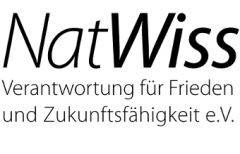Bitte beteiligen Sie sich an den Aktionen zur Friedenswelle
Light-Relay and Folded paper crane (Orizuru) going around the planet Earth
1: Please 1 minute light off ( extinction) of your house except TV etc at 8:15 pm <8:15 am is Hiroshima Bombing time> 20th September when UN start Ban treaty ratification.: light – relay goes around the Earth.
2 : Please put folded paper crane (Orizuru) at the door/ entrance at 11:02 am <11:02 is Nagasaki A-Bombing time >, 24th September,2017 for 1 hour. Orizuru is very symbolic material for No Nukes after tragic story of A-Bombed 12 y.o. Girl, Sadako Sasaki
3: Adding to these, Please sign your name to signature campaign calling for total Ban of Nuclear Weapons.
http://www.antiatom.org/sig-press/
World Conference, against A and H Bombs held at Hiroshima and Nagasaki, 2017 decided Peace Wave action as simultaneous world wide action around the day of 20th September, 2017 when Ban treaty starts ratification. In the Conference, The Orizuru cranes were very symbolic material calling for the World without Nukes. The Orizuru cranes may fly around the planet Earth and can become peace messenger bringing the Earth without Nukes:
These actions are closely related to using SNS media, and young peoples are good at these techniques. We hope these actions will spread to young peoples.
Promoter persons:
Terumi Tanaka ( Hibakusha; Co-chairperson of Japan confederation of A- and H Bomb Sufferes Organization)
Etsuko Yamauchi ( Hibakusha, Niigata City)
Shoji Sawada (emeritus Prof. Nagoya University ; Hibakusha)
Ikuro Anzai ( Prof. Ritsumeikan Univ.Peace Museum )
Kouji Tomida ( Prof. Kanseigakuin Univ. Drafting Commissioner at International conf. against A&H Bomb)
Shiro Maekawa, ( Gensuikyo )
Junji Akai (emeritus Prof of Niigata Unversity ,mineralogy )
Reiner Braun (Co-President International Peace Bureau (IPB)
Lucas Wirl (Program Director of INES)
Jun Kyu Lee (Korea, Peace Research center)
Katsuo Nishiyama ( emeritus Prof of Shiga medical Unversity)
Takayuki Kodera ( President of Maruki art museum of A-bomb memory )
Satoru Ikeuchi ( emeritus Prof of Nagoya University ; World Peace Appeal Seven Committee member)
Satoru Ihara ( emeritus Prof. Tohoku Univ . Executive director of the Japanese Scientiss‘ Association)
Profs., associate Profs, and emeritus and former Profs. of Niigata Unversity : :Takayo Fujiishi ; Hiroki Sako (mathmatics) ,
MorimitsuTanimoto (Physics, Former dean of Fac. Science), Tatsuyoshi Morita ( Former Dean of Fac. Education) .,Akio Ishida ( former Prof., Plasma Physics)
Hiroko Yamada ( Womens organization , director)
Aimi Uematsu ( University Student )
Tobias Alonso ( University Student )
